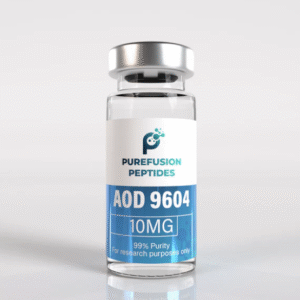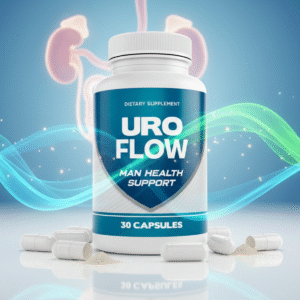If you’ve ever experienced a migraine, you know it’s not just a bad headache. The pounding pain, sensitivity to light, nausea, and hours (or even days) of discomfort can make it hard to function. The good news? Migraine treatments have come a long way, and 2025 brings new, proven strategies for effective Migraine Pain Management that actually work.
Whether you deal with occasional migraines or chronic attacks, these 10 expert-backed tips will help you manage the pain, reduce frequency, and reclaim control over your daily life.
1. Identify and Avoid Your Migraine Triggers
The first step in effective Migraine Pain Management is understanding what causes your migraines. Common triggers include stress, dehydration, skipped meals, hormonal changes, lack of sleep, and certain foods like aged cheese, chocolate, or caffeine.
Keep a migraine diary to track what you eat, how much you sleep, and when your headaches occur. Over time, patterns will emerge, helping you pinpoint and avoid your biggest triggers.
2. Stay Hydrated — Every Day Matters
Dehydration is one of the most underestimated migraine triggers. Even mild dehydration can lead to a throbbing headache or full-blown migraine episode.
Drink plenty of water throughout the day, not just when you feel thirsty. You can also include electrolyte-rich drinks, herbal teas, and hydrating fruits like watermelon or cucumber to maintain proper hydration levels and reduce migraine frequency.
3. Prioritize Sleep and Maintain a Routine
Sleep disruption is a major factor in migraine pain. Too little or too much sleep can both be problematic.
Aim for 7–9 hours of consistent, high-quality sleep every night. Go to bed and wake up at the same time daily, even on weekends. A calm pre-bed routine, like reading or meditating, can also signal your brain to relax and help regulate your body’s internal clock.
4. Manage Stress with Relaxation Techniques
Stress and migraines often go hand in hand. Chronic stress can release hormones that trigger inflammation and pain signals in the brain.
Effective stress management is one of the most powerful natural migraine remedies. Try practices like:
- Deep breathing and mindfulness meditation
- Progressive muscle relaxation
- Gentle yoga or stretching
- Spending time outdoors or journaling
These habits can help you stay calm and reduce migraine frequency over time.
5. Eat Balanced, Migraine-Friendly Meals
Skipping meals or eating at irregular times can cause blood sugar fluctuations another migraine trigger. Aim to eat every 3–4 hours, focusing on balanced meals with protein, fibre, and healthy fats.
Some migraine-safe foods include:
- Leafy greens
- Whole grains
- Lean proteins (like chicken or fish)
- Magnesium-rich foods (like almonds or spinach)
Avoid processed snacks, artificial sweeteners, and excessive caffeine, which may trigger or worsen migraine symptoms.
6. Use Cold Compresses and Rest in a Quiet Room
When a migraine strikes, immediate relief can make a world of difference. A simple yet effective technique is applying a cold compress or ice pack to your forehead or the back of your neck. The cooling effect helps constrict blood vessels and reduce inflammation.
At the same time, rest in a dark, quiet room to minimize light and noise sensitivity. Even 30 minutes of rest in a calm environment can shorten the duration of a migraine attack.
7. Try Medications and Preventive Treatments
For many Canadians, prescription medications are a key part of Migraine Pain Management. Over-the-counter (OTC) pain relievers like ibuprofen or acetaminophen can help with mild migraines.
However, if you experience frequent or severe attacks, your doctor may recommend:
- Triptans (for acute treatment)
- Preventive medications (to reduce frequency)
- CGRP inhibitors (newer migraine-specific drugs)
- Botox injections (for chronic migraine prevention)
Always consult a healthcare provider before starting or changing any medication routine.
8. Explore Natural and Holistic Therapies
More people are turning to natural migraine treatments to complement medical care. Acupuncture, massage therapy, and biofeedback have shown promising results for some migraine sufferers.
Certain supplements may also help, such as:
- Magnesium – helps prevent migraine onset
- Riboflavin (Vitamin B2) – reduces migraine frequency
- Coenzyme Q10 (CoQ10) – improves energy production in brain cells
Talk to your healthcare provider before starting supplements to ensure they’re safe and suitable for you.
9. Limit Screen Time and Protect Your Eyes
In 2025, digital eye strain has become one of the top migraine triggers. The constant exposure to blue light from phones, computers, and TVs can irritate the eyes and increase headache frequency.
To reduce the impact:
- Use blue-light filters on screens
- Take regular “20-20-20” breaks (every 20 minutes, look 20 feet away for 20 seconds)
- Adjust brightness and contrast settings
- Wear anti-glare or blue-light-blocking glasses
These small adjustments can significantly ease daily strain and support better migraine control.
10. Consult a Specialist for Personalized Migraine Care
If migraines are interfering with your daily life, it’s time to seek expert help. Neurologists or migraine specialists can provide tailored treatment plans that address your unique triggers and health history.
Advanced options such as nerve blocks, neuromodulation devices, or CGRP therapies are becoming more accessible across Canada and offer long-term relief for chronic migraine sufferers.
FAQs About Migraine Pain Management
1. What is the most effective way to manage migraine pain?
The most effective approach combines identifying triggers, taking prescribed medication, managing stress, and maintaining a balanced lifestyle. A personalized migraine management plan works best.
2. Can migraines be cured permanently?
There’s no permanent cure yet, but consistent Migraine Pain Management can drastically reduce the frequency and severity of attacks.
3. Are there natural remedies for migraines?
Yes, hydration, adequate sleep, magnesium supplements, acupuncture, and cold compresses can all help manage migraine pain naturally.
4. When should I see a doctor for migraines?
If your migraines occur more than four times a month, last longer than 72 hours, or affect your daily activities, consult a neurologist for specialized care.
5. Does diet affect migraine pain?
Absolutely. Certain foods like aged cheese, processed meat, and caffeine can trigger migraines, while nutrient-rich, anti-inflammatory foods can help prevent them.
Conclusion
Migraines can feel overwhelming, but with the right combination of lifestyle changes, preventive care, and professional guidance, effective Migraine Pain Management is absolutely achievable in 2025.
From hydration and sleep hygiene to advanced treatments like CGRP inhibitors and acupuncture, managing migraines is no longer about temporary fixes; it’s about achieving long-term control and improving quality of life.
If you’re looking for personalized migraine treatment options or custom-compounded medication solutions, Aurora Compounding Pharmacy offers professional, pharmacist-guided support to help you find lasting relief. Their expertise in individualized care ensures your treatment aligns with your body’s unique needs so you can finally live pain-free and migraine-free.




